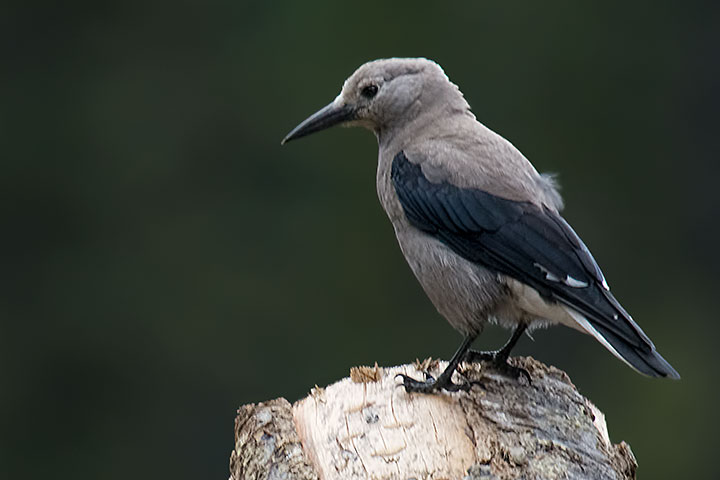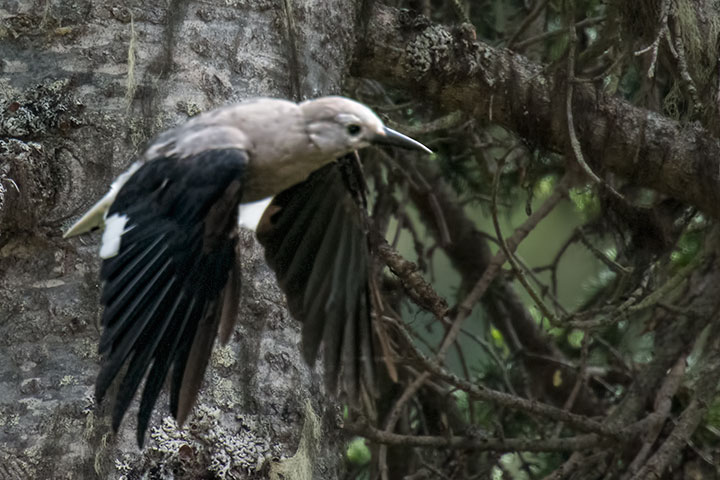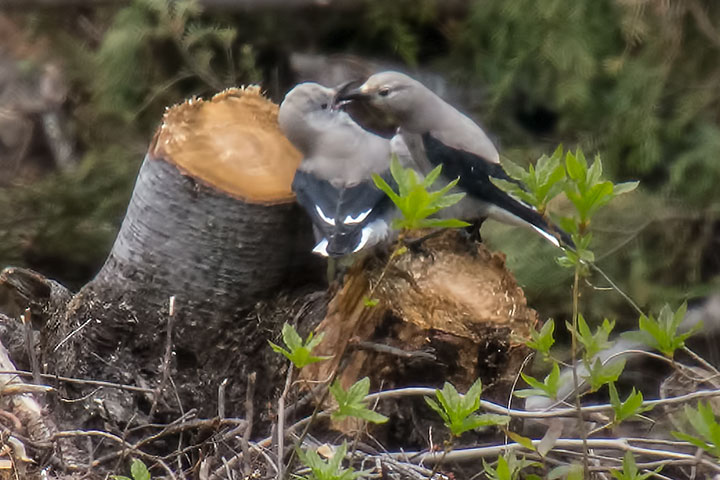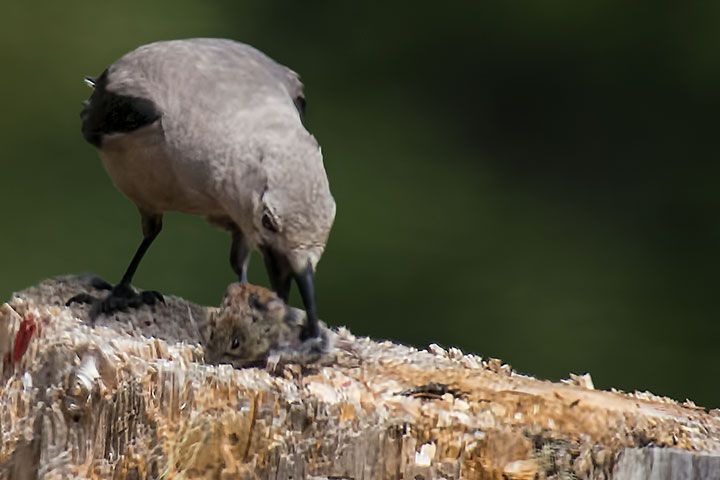While Clark’s Nutcrackers are occasionally seen at lake level, they prefer subalpine forests where they (mainly) eat the seeds found in the cones of evergreens. I wouldn’t have known where to look, but Derek Kite drove me twenty kilometres up a steep logging road and, after seeing nothing along the way, nutcrackers appeared in a clearcut at an altitude of about 1700 metres. There were dozens of them feasting and flying from tree to tree.
Usually seen at a distance, this nutcracker came close enough for a portrait.
Never on one perch for long, each bird soon flies off.

Nutcrackers are monogamous and the relationship even involves mutual feeding.

The nutcracker’s diet even extends to small mammals. 

Hello Alistair, does the bird in the bottom picture have a double right foot? Or perhaps extra toes? Beatutiful pictures, as always.
Mary Kate
Mary Kate, it does look a bit odd, but I went through all the pictures of the feast on the stump and they were the same. A nutcracker has four toes. Usually, three are forward and one is back. They seem to be held in awkward positions here.